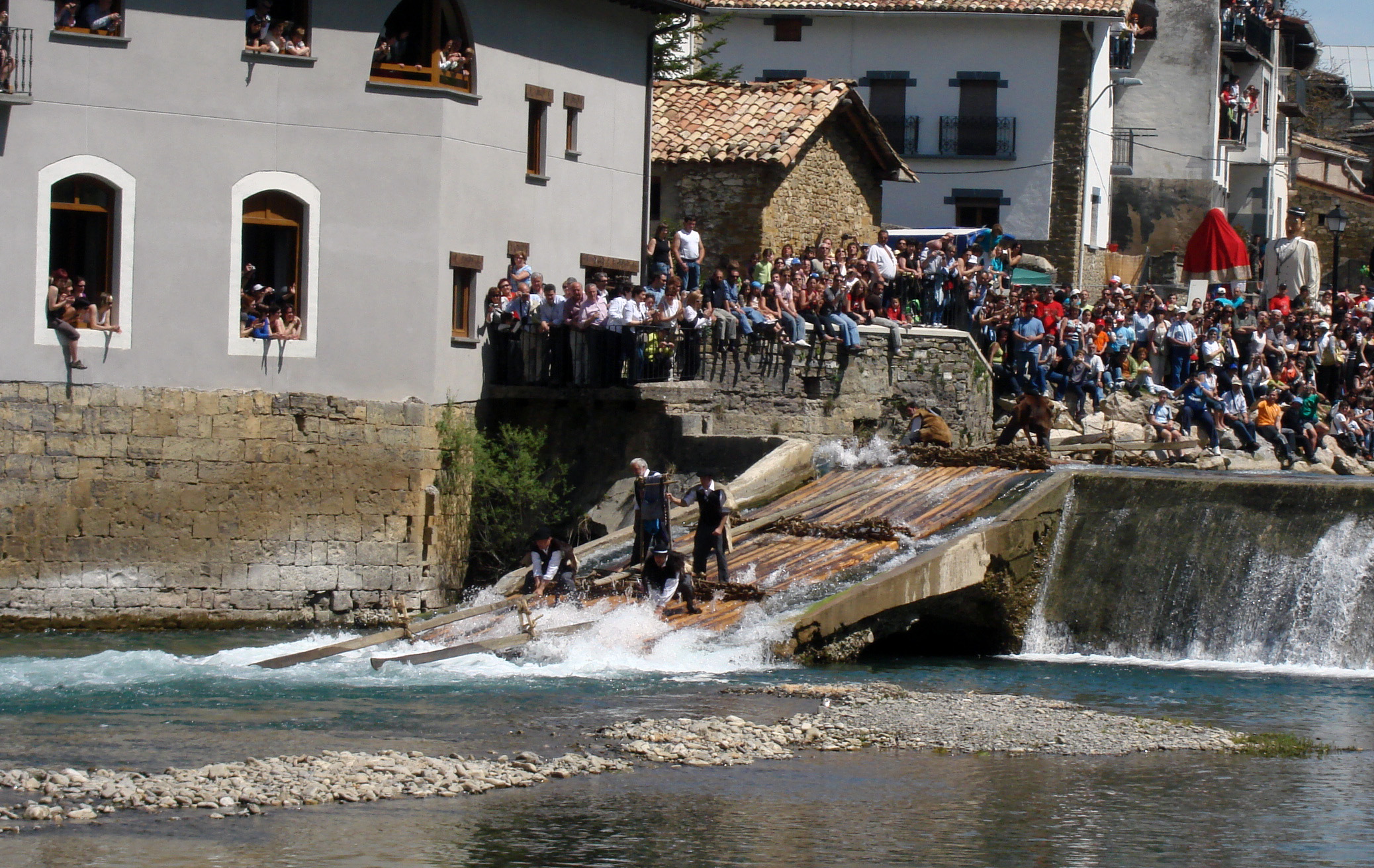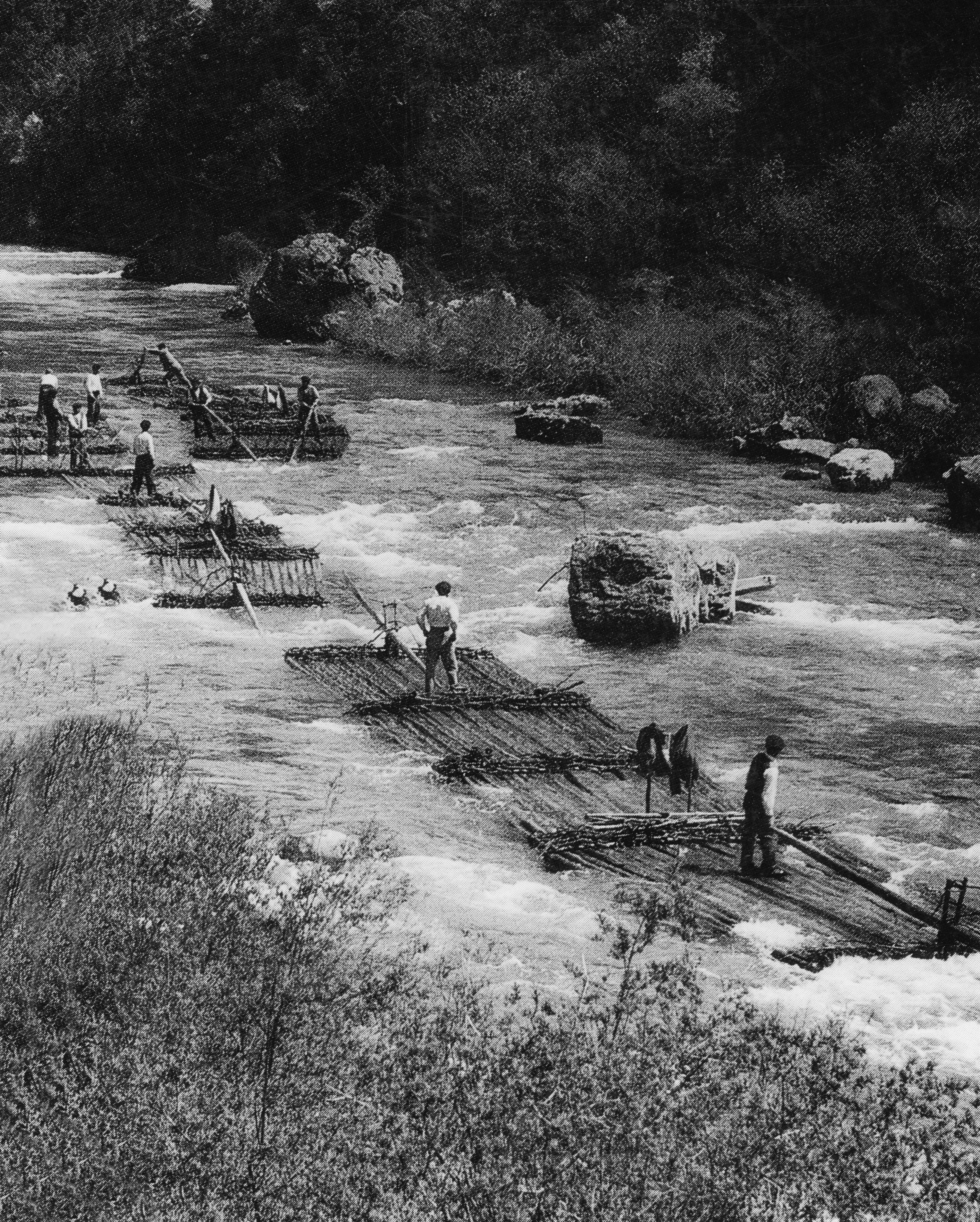Basque ethnography at a glance
Livestock farming and timber production stand as the primary sources of income in the Pyrenees. The extensive forests are indeed a major natural resource, and noteworthy among these are the lower woodlands of Quinto Real, Irati and Belagoa-Belabarze in the extreme west. Beeches of considerable height can be found in this area. It is therefore not surprising that their timber and its commercialisation remained a thriving business until very recent times. The wealth of the forests allowed for the development of a new trade within the community of Navarrese mountain peoples: the rafter. A raft made out of tree trunks and drifted down a river was known as almadía in Navarre. Timber rafting was a means of transporting logs from the above-mentioned Pyrenean woods to different destinations including the main nearest shipyards of Catalonia. It should be noted that the ancient royal roads in the high mountains were hardly accessible to carriages or galleys, and log transportation along watercourses proved much quicker and easier. According to Balcells, the first documented references to timber rafting on Navarre rivers date from the 14th century. In the early days the floating platforms were said to be commanded by raftsmen from Aragon, and it was not until the middle of the 17th century that exploitation of forests was taken over by local timbermen.
The rafting season started in spring. Felled logs piled on the banks awaited to be rafted until rivers were in full spate. From the end of March onwards, when peak meltwater discharge diverted into regular streamflows and rivers run high, rafts carrying beech, oak and fir (Abies alba) logs descended the rivers Eska (running through the Roncal Valley), Salazar and Irati (whose source is in the forest named after it) and proceeded towards Sangüesa with last stop in Tortosa. Along the way inns, lodges and provisioning facilities served the needs of the rafters, but the long journey was nonetheless dangerous. November was usually the deadline for navigation, for the hazards posed by downstream waters increased and the biting winter cold already got hold of the mountainous landscape.

Day of the Timber Raft in Burgui (Roncal Valley), 2010. Pablo Álvarez Vidaurre.
With the advent of new hydraulic resource management policies, all timber-rafting activity definitely ceased. Such regulations concerned with energy production and the use of dams, reservoirs and closed channels for water supply and irrigation. We are sure to say that river transport in Navarre came to an end as a result of the construction of the Yesa reservoir by the middle of the 20th century.
Timber rafting continues present in the living memories of the Pyrenean valleys. There are museums and exhibition halls dedicated to perpetuate this ancestral occupation. The Museo de la Almadía – Museum of the Timber Raft at Burgui, in the southern end of the Roncal Valley, is a good example. It is also in Burgui that the Day of the Timber Raft is celebrated around April or May (there is no fixed date for it) every year. This picturesque initiative was declared Festival of National Tourist Interest in 2005. On the day rafts ply the waters of the Eska River once again. Similar occasions in other sites of the mountain range and highlands of Aragon commemorate and pay tribute to yesteryear’s rafters.
Pablo M. Orduna – Etniker Navarre – Etniker Euskalerria Groups
Translated by Jaione Bilbao – Language Department – Labayru Fundazioa
References for further information:
Pablo M. Orduna. “Pastores y almadieros a orillas del Irati” in AA. VV., El Puente de Aoiz (Aoiz-Agoitz). Madrid, 2011, PSP, pp. 85-128.
Juan Cruz Labeaga. Almadías en Navarra. Merindad de Sangüesa. 1992.


